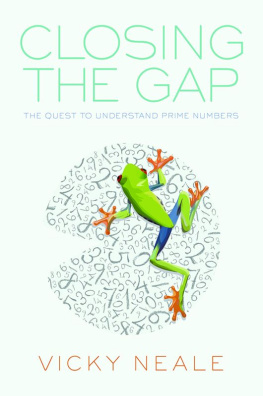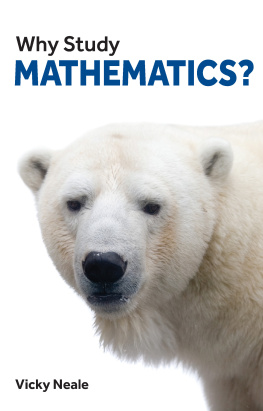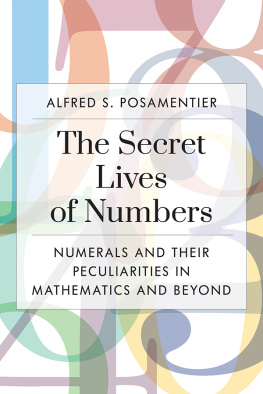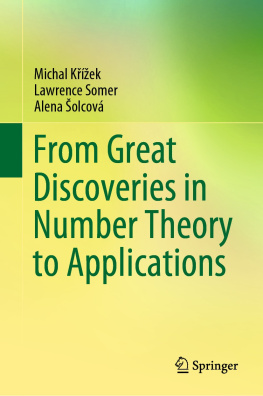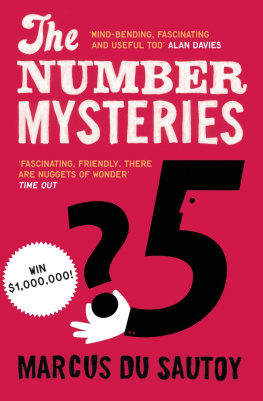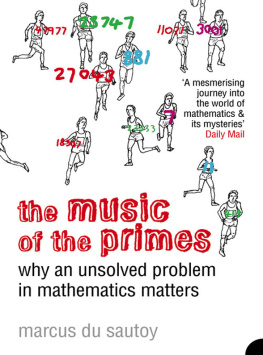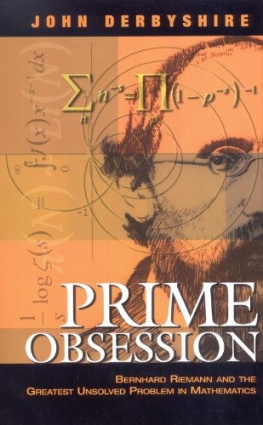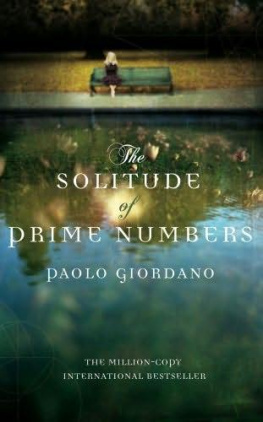Closing the Gap
CLOSING THE GAP
The Quest to Understand Prime Numbers
VICKY NEALE


Great Clarendon Street, Oxford, OX2 6DP, United Kingdom
Oxford University Press is a department of the University of Oxford. It furthers the Universitys objective of excellence in research, scholarship, and education by publishing worldwide. Oxford is a registered trade mark of Oxford University Press in the UK and in certain other countries
Vicky Neale 2017
The moral rights of the author have been asserted
First Edition published in 2017
Impression: 1
All rights reserved. No part of this publication may be reproduced, stored in a retrieval system, or transmitted, in any form or by any means, without the prior permission in writing of Oxford University Press, or as expressly permitted by law, by licence or under terms agreed with the appropriate reprographics rights organization. Enquiries concerning reproduction outside the scope of the above should be sent to the Rights Department, Oxford University Press, at the address above
You must not circulate this work in any other form and you must impose this same condition on any acquirer
Published in the United States of America by Oxford University Press 198 Madison Avenue, New York, NY 10016, United States of America
British Library Cataloguing in Publication Data
Data available
Library of Congress Control Number: 2017948689
ISBN 9780191092442
Printed and bound by CPI Group (UK) Ltd, Croydon, CR0 4YY
Links to third party websites are provided by Oxford in good faith and for information only. Oxford disclaims any responsibility for the materials contained in any third party website referenced in this work.
CONTENTS
Until the nineteenth century, the Inaccessible Pinnacle was, well, inaccessible. A slender slice of basalt rising amongst the Cuillin mountains on the Isle of Skye, off the north-west coast of Scotland, it seemed unclimbable to the early pioneers of the nineteenth century who set out to explore the Cuillins. These days, it remains a challenging climb, but it is definitely not impossibly difficult: given fine weather, tour guides can take novices right to the top.
Mathematical exploration has much in common with this kind of adventuring. You stand looking at the sheer surface of your mathematical problem, searching for toeholds and crevices that might give a way up. After a long time looking, you start to make out an indistinct crack to the left, and a slight pattern in the rock up and to the right that reminds you of a climb you heard about once. Putting together all the features youve noticed, you can sketch out a possible route up the rock face, although its not quite clear whether that small ledge will make a good toehold and theres a pretty ambitious reach near the top that might well be a stretch too far.
Still, now that you have a possible route in mind, you can start climbing, and hope that the details will become clearer along the way. Perhaps that reach will be too big, but when you get a bit closer maybe therell be a crack in just the right place for your fingers.
Unfortunately, when youre three-quarters of the way up a sliver of rock breaks away, your toehold disappears from beneath your feet, and you drop back some way. Eventually, however, if you persevere you might reach the top.
Once someone has found their way to the top, suddenly the inaccessible becomes much more accessible. Once you know that someone has been up, you know that it can be done. If you have access to their notes, or know someone who heard them describe the route, then perhaps you can even follow in their footsteps. In some cases, what was at first a risky and demanding endeavour for pioneers becomes mainstream, and suitable for a weekend stroll even by those who have no climbing experience.
Now, there are many things about this that do not describe what it is like to do mathematicsand probably its not such a great description of rock climbing either. But the analogy has its uses.
Rock climbing usually involves many people: often a challenge is taken on by a team rather than an individual, and also many teams will tackle the same rock face. In mathematics, there are romantic stories of individuals making heroic breakthroughs by themselves. Less well known are the collaborations, some of which in the twenty-first century involve very large numbers of people. This book has a romantic story of the best kindan extraordinary breakthrough by an individual. It also has insights into these new large collaborations, and what they can reveal about what mathematicians do when they do mathematics. The Inaccessible Pinnacle for the mathematicians on this quest is the Twin Primes Conjecture, one of the most famous unsolved problems in the whole of mathematics. Ill tell you much more about it in the coming chapters.
I am no climber. If you are, then you will have detected this from the flaws in my description above! I do, however, love going on holiday to Skye, and when I am there I enjoy walking. I am inexperienced, and nervous about setting out on potentially hazardous trips by myself. However, I have had some wonderful days walking in the foothills of the Cuillins, seeking a personal challenge, enjoying the stunning scenery, catching glimpses of the peaks when they emerge from the clouds and marvelling at the skill, fitness and courage of those who reach the summits.
This book is for those who enjoy roaming the mathematical foothills. I hope to be the kind of guide that I would like for my trips to Skye: I want to show you the sights. In particular, I hope to give you glimpses of the summits, and to tell you tales of the people who climb them, while also leading you along my favourite routes in the foothills and pointing out some directions for adventures you might want to undertake in the future. Inevitably, this will present you with challenges. I have tried to select our routes carefully, and much of the journey is easy walking with spectacular views, but sometimes you will find that there is a tricky stretch, with some parts seeming out of reach. You have a big advantage over the hillwalker, though, because if a part is too challenging for you at the moment then you do not have to stop there: you can turn the page and skip over it in one bound! Ill try to highlight these parts, but I hope that you will skim through them to get some sense of the ideas involved, even if you do not want to go through them in detail on a first reading. This is, after all, how mathematicians usually read each others papers and books.
With the scene set, its time to set off. While you put on your mathematical walking boots, Id like to thank some people.
I am very grateful to numerous friends and colleagues for their help with this book. Frances Kirwan encouraged me right from the start. Tim Gowers, Ben Green and James Maynard generously gave their time to tell me about work, both their own and that of others. Jennifer Balakrishnan, Rebecca Cotton-Barratt, Charlie Gilderdale, Lizzie Kimber, Ursula Martin, John Mason and Robin Wilson read drafts (and in some cases redrafts too), and gave me lots of constructive feedback and encouragement. Naturally the mistakes that remain are all my own. Keith Mansfield, then at Oxford University Press, supported me at the beginning of the project, and helped me to navigate the initial stages of the publishing process. Dan Taber, who took over the project from Keith, has been endlessly patient and kind, and came up with the title Closing the Gap.
Next page
